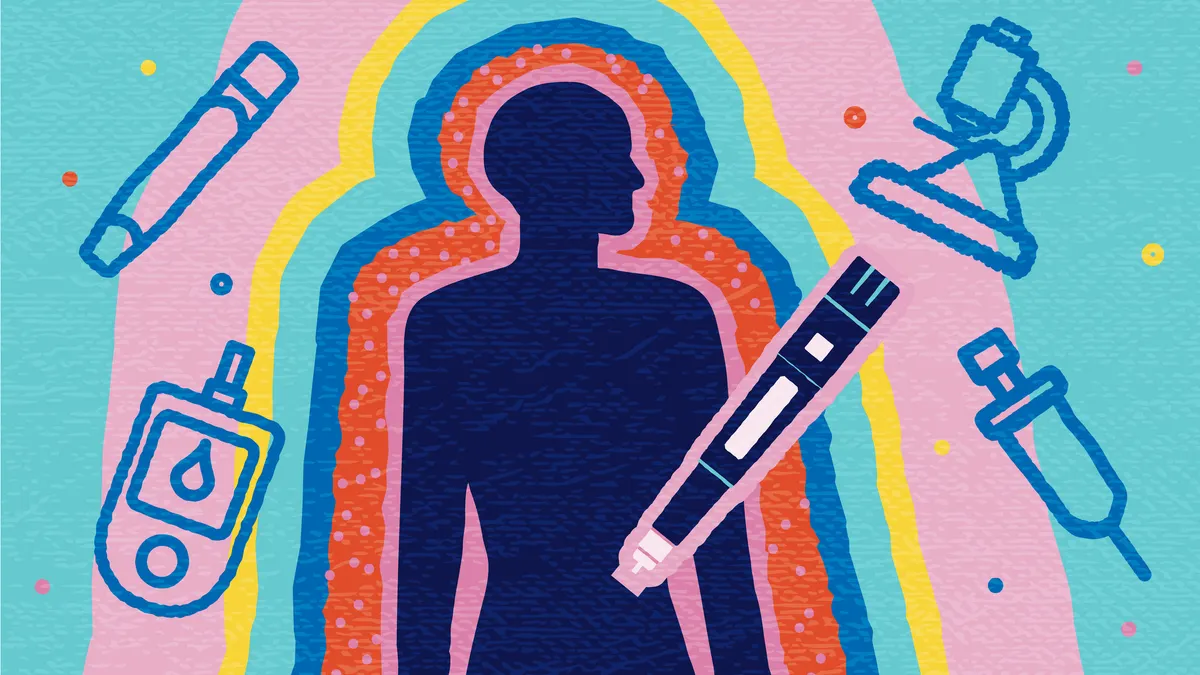The COVID-19 pandemic highlighted many shortcomings in healthcare, not the least of which was the discontinuation of important clinical trials due to restrictions on in-person site visits. The answer at the time? Decentralized clinical trials (DCTs), which took off to keep the engine running.
Now that in-person visits are back, decentralized trial evangelists are facing the opposite challenge — convincing the industry that DCTs are still worth pushing because the investments will pay off in flexibility for both patients and industry players.
Rising to that challenge will require an industry mindset that puts DCTs on the radar from the very beginning of trial design so that they can live alongside traditional studies in a hybrid format, said Hassan Kadhim, senior director and head of clinical trial business capabilities at Bristol Myers Squibb. Kadhim also lends his expertise to the biopharma consortium TransCelerate.
"I think the biggest obstacle to DCTs this year, and maybe in the upcoming years, is to continue finding the value of DCTs outside the context of the COVID pandemic," Kadhim said. "Now that the pandemic has receded, and we're not in that kind of urgent crisis, there will be some tendencies in the industry to think, ‘Do we really need it to grow us as far as we thought we should? Or should we just go back to in-clinic visits 100%?’"
But Kadhim said the future of DCTs is in providing flexibility for both patients and the industry, which will showcase the full value of the technology. Now pharmas are faced with an inflection point — the initial cost of setting up DCTs will need to result in value down the road, and not just in pandemic times.
The sunk cost fallacy
Investment in DCTs rose during the pandemic due to the unpredictability of the markets and a need for new ways to treat patients and test drugs. But if the cost of that is higher than the value the industry gets back from the initiative outside of pandemic times, the implementation of DCTs would fall, Kadhim said. But that would be a mistake.
"If something is not working, companies generally tend to absorb that sunk cost and move on," Kadhim said. "For DCTs, the worst thing that could happen is companies give up and they think (they’re) not worth (doing) anymore."
"I think there is no reason today for the industry to not consider DCT for every time, and the emphasis here is on the term 'consider.'"

Hassan Kadhim
Senior director and head of clinical trial business capabilities, Bristol Myers Squibb
Lessons learned during the pandemic are likely to keep that from happening, he said.
"They invested heavily, and frankly, I don't expect a major going back — I think the challenges we all experienced with COVID are so real that we all learned a lesson to a certain degree," Kadhim said. "What might happen is just a slowdown because the urgency is not that imminent anymore."
And if clinical trials are to continue to become less localized, the industry will need to show that they can provide the flexibility and value that they once promised, which means overcoming some of the challenges and questions that have arisen over time.
Patient behavior is one of the toughest mountains to climb, Kadhim said. Different therapeutic areas require different kinds of trials, and not every patient will find a decentralized study optimal for their condition.
"Specifically, where patients feel fully empowered to make their own decisions on treatment options, I think you have a higher ability to implement DCTs, and this is mostly in chronic disease because patients have been living with a disease for a long time," Kadhim said. "They know how it manifests in their body, they know how to deal with it, and so they feel more empowered to make their own decisions."
Patients now are also different than they were decades ago in terms of doing more online.
"They're more comfortable researching their conditions (and) treatment options, so the patient of today is different in that regard than the patient of even 20 years ago," Kadhim said. "Scalability on the patient side is certainly aided by DCTs — you can reach more patients and they don't have to be geographically located with the different sites."
For that reason, rare diseases could be an area where DCTs provide the most benefit, Kadhim said.
"Recruitment is definitely a challenge for rare diseases, because there are so many patients in the world that are affected by a specific condition and you need to find them and you need to make it easier for them to participate in a trial," Kadhim said. "If they are forced to move temporarily to be closer to the site — for a year or for the duration of the trial — then you're creating a barrier for their access to the trial."
But that comes with challenges of its own, and since the quality of data is the primary goal of any clinical trial, the processes need to be uniform and repeatable, which isn't always possible.
Quality counts
In a traditional trial with several sites, the technology available at each of the locations allows for a distinct experience for every patient. But consider the differences between care at a rural hospital with fewer resources compared with a big city hospital that has funding for the latest technology. How can a clinical trial reconcile those differences?
"The current clinical trial model relies on many different institutions and key opinion leaders that we must continue to engage with even in a decentralized clinical trial — the challenge with scalability there is some sites want to use their own technology," Kadhim said. "So if the technology component is a must, and I believe it is, and if you have this very diverse implementation from site to site that will impede your scalability objective, because now you have some sites that will tell you, ‘I actually don't want to use any of your technology,’ and other sites that will tell you, ‘Thank you, this is great technology, I will use it.’"
This creates a heterogeneous way of implementing that trial. To add to that discrepancy, some data points in a trial might come from home sensors, and these might also differ in their sensitivity and use.
"There are ways to do this remotely, but you have to think about many aspects, like how will you collect data from every patient? Are they telemedicine visits? Not every patient can do that," Kadhim said.
Modernizing the clinical trial
TransCelerate, the nonprofit consortium with membership that includes the biggest pharmas in the world, has begun to build a framework for decentralized trials that could help companies devise their own strategies moving forward.
The Modernizing Clinical Trial Conduct Initiative, for example, is not meant to be prescriptive. Instead, it's designed to signal where the industry can evolve along with changing technologies. Kadhim said it's a way to show pharmas when — and when not — to consider DCTs as a viable option.
"During the pandemic, we (realized as) an industry that we needed to change, and we needed to evolve our ways and methods of designing and conducting clinical trials to ensure or enable the industry to be better prepared for the future, in case a crisis like this one were to happen, but also just to advance more access to patients in clinical trials," Kadhim said.
One of the biggest steps would be for DCTs to become part of the conversation in the design of every trial, even if it doesn't turn out to be the answer.
"I think there is no reason today for the industry to not consider DCT for every time, and the emphasis here is on the term 'consider,'" Kadhim said. "Part of the problem today is that many studies don't even consider it — they're designed from the beginning in a traditional trial setting, and I think that's what we want to ensure we don't revert back to."




















